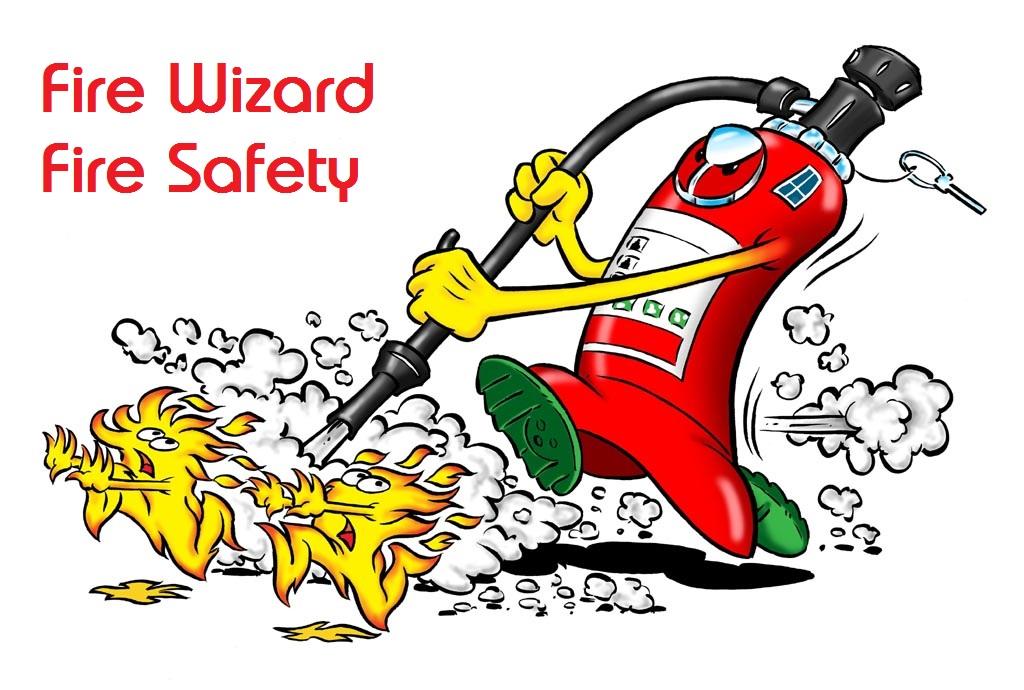-
Posts
2,703 -
Joined
-
Last visited
Everything posted by AnthonyB
-
Depends if the store is of fire resisting material or not. Your local Fire Service are the enforcers and can advise if you are at risk and take action if required.
-
It's been a legal requirement in new care homes in Scotland for many years and has been in UK wide guidance for healthcare premises and care homes for many years also, all as a result of the multi fatality Rose Park Care Home fire in 2004. One of the many failings that contributed directly to the deaths was a 25 minute delay in calling the fire service after the first detector triggered whilst staff were investigating and doing other things. Relying on the human factor in this sector is no longer considered adequate and whilst it is not intended to replace staff 999 calls it is there to act as a failsafe and also a timesaver - every minute saved is critical.
-
In certain circumstances key operated call points are permitted, your appointed fire risk assessor should be able to come up with a set of options. Does the premises have extensive smoke detection?
-
Based on that number then in theory just one - however this would restrict considerably the size of the premises, so based on size & layout (& resulting travel distances) you would be looking at at least 2.
-

Should emergency lights show a green or red light?
AnthonyB replied to a topic in Emergency Lighting
Do you mean it goes from being unlit other than the green LED to fully illuminated? -
If the conversion is to a standard that would have met Building Regulations then just because it's pre-1991 doesn't mean it needs full alarms and evac policy. However it's more likely it doesn't (e.g. no smoke control even if structure is good) and so the LACORS recommendations would remain approopriate.
-

Are rising butt hinges allowed for fire doors?
AnthonyB replied to a topic in Fire Doors and Accessories
Whilst rising butt hinges are no longer approved for fire doors on their own due to reliability issues, if you are pairing them with an EN 1154 closer and they are CE marked and of a suitable metal for use in fire doors then I can't see an issue. -
Absolutely not and it didn't comply at the time of installation either and is exceedingly dangerous in a care home where evacuation is progressive and the integrity of the alarm system is critical. The sounders should have been in FP as a minimum and the panel set to SC=F. If you are upgrading the system should be to current standards with full FP wiring. A way to avoid disruption is to use wireless fire alarm technology https://www.safelincs.co.uk/wireless-fire-alarm-systems/
-

Does my front door need a lock without key?
AnthonyB replied to a topic in Fire Doors and Accessories
Older single chain perko's don't usually meet current or even contemporary standards (it's not impossible though, compliant versions do exist and have done for a while). In existing premises it's usually only rising butt hinges or no closer at all that is a high priority non conformity, as your build was during the period after the introduction of the 'modern' building guidance of Approved Document B then as a compliant fitting at the time, with a compliant door leaf and layout of the building being post 1991, it would usually be acceptable whilst still in full working order. -

Screws to fix lining to stud partition
AnthonyB replied to Abd's topic in Fire Doors and Accessories
Single dwellinghouse - no self closer or signs needed -
It depends where it is an what it's covering. If it's in a non industrial indoor environment then usually yes as it can be deleterious to escape, health and the materials/equipment in the room. If it's in a building where the public are present, or healthcare premises or if on an escape route I will normally ask for immediate replacement, if elsewhere then it can wait until the 5 year extended service is due - if it's covering a risk where no extinguisher is required in it's place (e.g. gas/boilers) then it can go there and then!
-
No, it doesn't replace the requirement for extinguishers, a fire will still grow to a reasonable size in a room before the heads go. It can allow a reduction in scales, but there should still be extinguishers provided as per BB100 the Government design guide for fire safety in schools, concentrating on risk areas, e.g. CO2 & fire blanket to labs and food tech, Wet Chemical to main kitchens etc
-

Screws to fix lining to stud partition
AnthonyB replied to Abd's topic in Fire Doors and Accessories
Is this a house or commercial? If a house you don't need the signs or the self closer. If it's commercial, it's a different matter. -

Calculating Capacity / Width of exit doors
AnthonyB replied to Meady's topic in Fire Safety in Village Halls
I've just realised - this is a new build that's still on paper? You may benefit from designing to BS9999 and not Approved Document B - it is more generous and flexible in it's approach. -

Does my front door need a lock without key?
AnthonyB replied to a topic in Fire Doors and Accessories
For an existing premises, yes - simple single action, no key required in direction of escape, can't be latched shut, no snib. -

Calculating Capacity / Width of exit doors
AnthonyB replied to Meady's topic in Fire Safety in Village Halls
Whilst it wouldn't win a Plain English reward, it is indeed saying the 5mm/person rule is only for doors over 1050mm -
It's up to whoever is responsible for the common areas. If they are taking a 'zero tolerance' approach to compliance then you would expect them to be removed. If they wish to implement and monitor a 'managed use' approach then framed pictures could be retained. It's discussed in here p55-61 https://www.local.gov.uk/sites/default/files/documents/fire-safety-purpose-built-04b.pdf
-
They seem to be correctly applying the LACORS guidance now I have the detail as to why they are requiring these steps, the additional steps are due to the unusual layout. The fire alarm requirement is still domestic alarms, just the mains type as have been required for many years. As it's clear the premises are in the selective licensing area you are going to need to do the work.
-
Your local authorities Health Protection/Environmental Services/Environmental Health department (they all have different names in different councils these days!)
-
They are applying "strict rules of ADB" to paraphrase the film Goldfinger - which says that every flat should have rooms accessed off an internal protected lobby (the common area it opens off is immaterial) a principle that's been around for decades. Oddly they are ignoring the bedroom off the kitchen (unless they are counting an escape window in the bedroom as an alternate escape as it's ground floor). They are acting correctly - of course ADB is just a suggested method of complying with Building Regulations and if you can provide an alternative approach that provides at least equivalent safety then it is acceptable too. If you had a different AI who accepted a non ADB layout without compensatory measures then that was good fortune on your part in that case.
-

Evacuation of people in wheelchair/ mobility disability
AnthonyB replied to Carla Wynker's topic in Evacuation Plans
This is aimed at housing, particularly where vulnerable individuals who live in the community are concerned. https://www.nationalfirechiefs.org.uk/write/MediaUploads/NFCC Guidance publications/NFCC_Specialised_Housing_Guidance_-_Copy.pdf -
You are straying into property law so need a specialist sector legal adviser, however the risk assessors are correct and there is no legal requirement for the system - your leases will determine what you are obliged to pay towards and if it is something not actually legally required you may have grounds for a legal challenge - there was a group action by leaseholders against having to bear the cost of new fire doors which, in the specific situation of their property, were not actually required, they won their case.
-
I've answered your duplicate post in the Fire Risk Assessment section - something isn't right somewhere!
- 13 replies
-
This sounds like the Council is treating your premises as a HMO requiring licensing and with it more stringent fire safety requirements than a typical house. Your description is of a typical single household let which doesn't require mandatory licensing and does not require the additional precautions mentioned - also it isn't covered by the Fire Safety Order and doesn't require a Fire Risk Assessment. When did you personally (not any agent you may employ) last inspect the premises? It's not unknown for the original tenants to illegally sublet and thus bring the house under HMO & Fire Safety legislation - it's also not unknown for agents to do this either whilst letting their client think they have a single traditional tenant. If your property is in Bootle (in the areas in this map https://www.sefton.gov.uk/media/1329025/BootleSL_map.pdf and on this list https://www.sefton.gov.uk/media/1329022/SL-Designation_Final.pdf)then there is a Selective Licensing scheme where Sefton Council have acquired the rights to license ALL rental premises, even single household lets (usually because of a high percentage of rental properties found in deficient condition in the area) in which case you would need a license, but unless it's been turned into a HMO without your knowledge the fire safety requirements are minimal: Escape routes No requirement for full 30-minute protected route * but the escape route should have sound, conventional construction and should not pass through risk rooms No requirement for fire doors *, but sound, well constructed and close-fitting conventional doors are required Alternatively, provide suitable escape windows from bedrooms and living rooms Fire separation No requirement for additional fire resistance, but walls and floors should be of sound, conventional construction. If a basement/cellar is present, 30-minute separation between the cellar and the ground floor escape route is the ideal Fire detection and alarm system Grade D1, LD3 system • interlinked mains wired smoke alarms with integral tamperproof battery back-up located in the escape route at ground and first floor levels; and • additional interlinked smoke alarms with integral battery back-up located in any cellar Lighting of escape routes No requirement for emergency escape lighting, but conventional artificial lighting is required Fire fighting equipment It is recommended good practice to provide a fire blanket in the kitchen Fire safety signs No requirement Surface finishes & floor coverings No requirement Management and maintenance of fire safety It is recommended that all doors are kept closed at night * where construction standards are poor, travel distances are long or other higher risk factors are present, a 30-minute protected route may be required. https://www.cieh.org/media/1244/guidance-on-fire-safety-provisions-for-certain-types-of-existing-housing.pdf https://www.sefton.gov.uk/housing/private-housing/selective-licensing.aspx https://www.sefton.gov.uk/housing/private-housing/additional-(hmo)-licensing.aspx https://www.sefton.gov.uk/housing/private-housing/mandatory-hmo-licensing.aspx
-
With external access areas the usual rule of thumb is FD30 doors where they may need to be passed by other people to escape, assuming walkways do not exceed 2m so overhang doesn't trap smoke. This situation is a bit of a mix of external and internal factors, this is where the risk assessors expertise comes into play as you have to use your judgement. If the doors have to be passed by others then you are at FD30. If the layout allows smoke logging (such as the enclosed section) then that goes up to FD30s as if fully enclosed.

